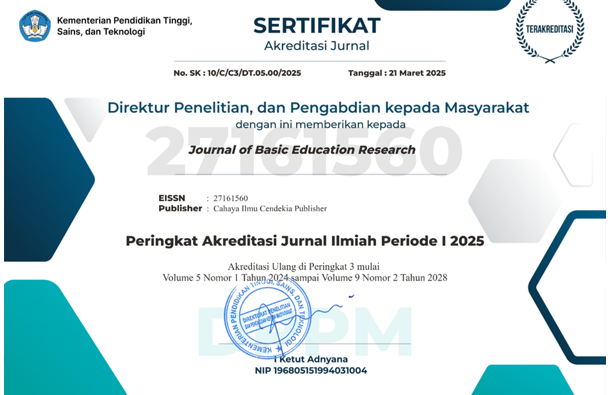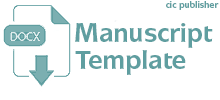| ISSN |
| Accreditation |
*) Journal of Basic Education Research is Accredited Sinta 3 by the Director General of Higher Education, Research, and Technology, No. 10/C/C3/DT.05.00/2025 - Vol.9, No. 3, 2028
| Publisher |
| In Partnership with |
| People |
| Editorial Team |
| Reviewers |
| Review for This Journal |
| Contact |
| Policies |
| Focus and Scope |
| Peer Review Process |
| Ethic and Malpractice Statement |
| Publication Frequency |
| Open Access Policy |
| Repository Policy |
| Screening for Plagiarism |
| Correction and Retraction |
| Copyright and Licensed |
| Indexing and Abstracting |
| Allegations of Misconduct |
| Archiving Policy |
| Submission |
| Author Guidelines |
| Online Submission |
| Privacy Statement |
| Article Publication Charge |
| Manuscript Template |
| Recommended Tools |
| Journal Metrics |
| Acceptance Rate : | 45 % |
| Review Speed : | 60 days |
| Issue Per Year : | 3 |
| Number of Volumes : | 5 |
| Number of Issues : | 11 |
| Number of Articles : | 66 |
| No. of Google Citations : | 304 |
| Google h-index : | 9 |
| Google i10-index : | 8 |
| Abstract Views : | 12,340 |
| PDF Download : | 9,434 |
UPDATE: 03 April 2024
| Visitor |
| Indexing and Abstracting |

.png)


.png)
.png)


















